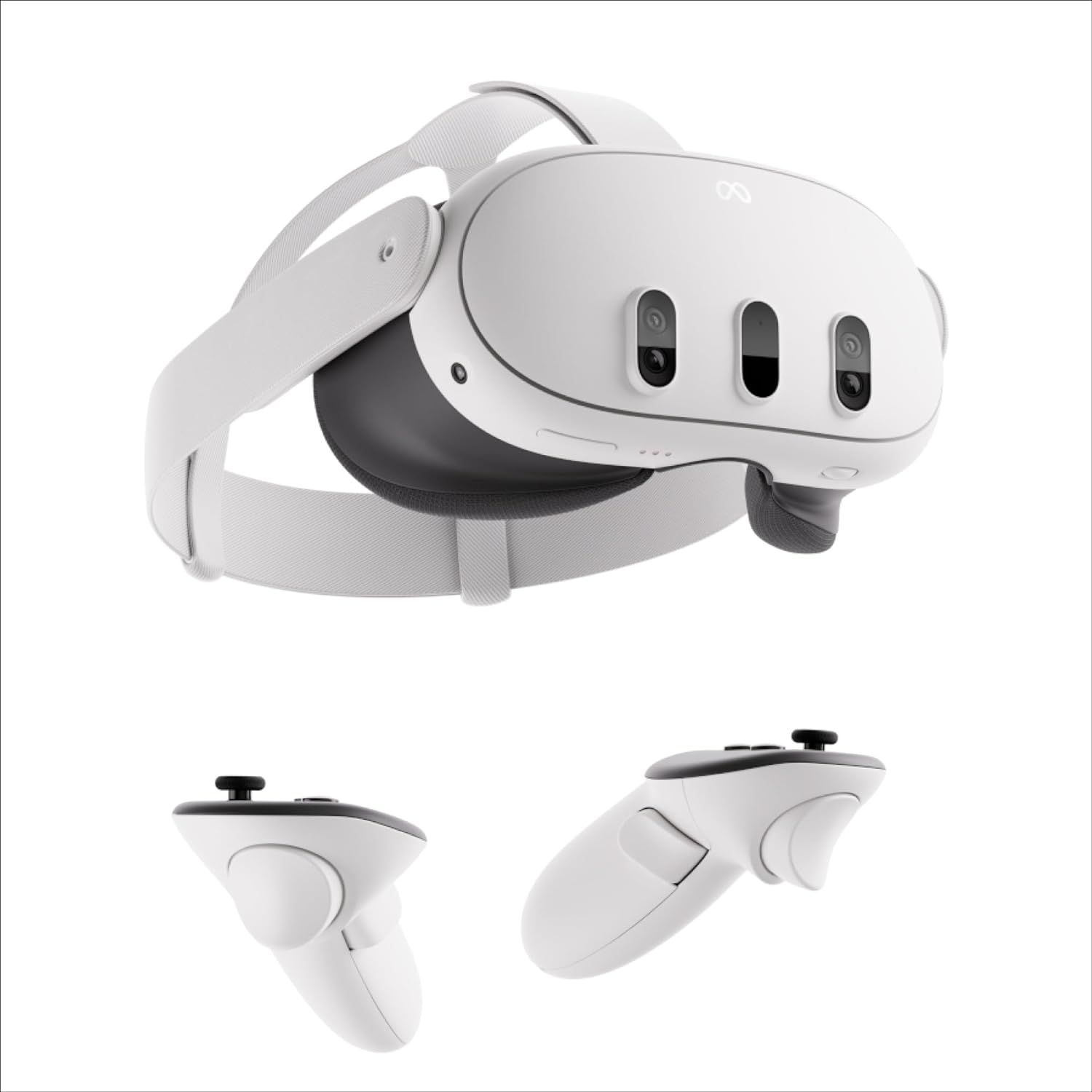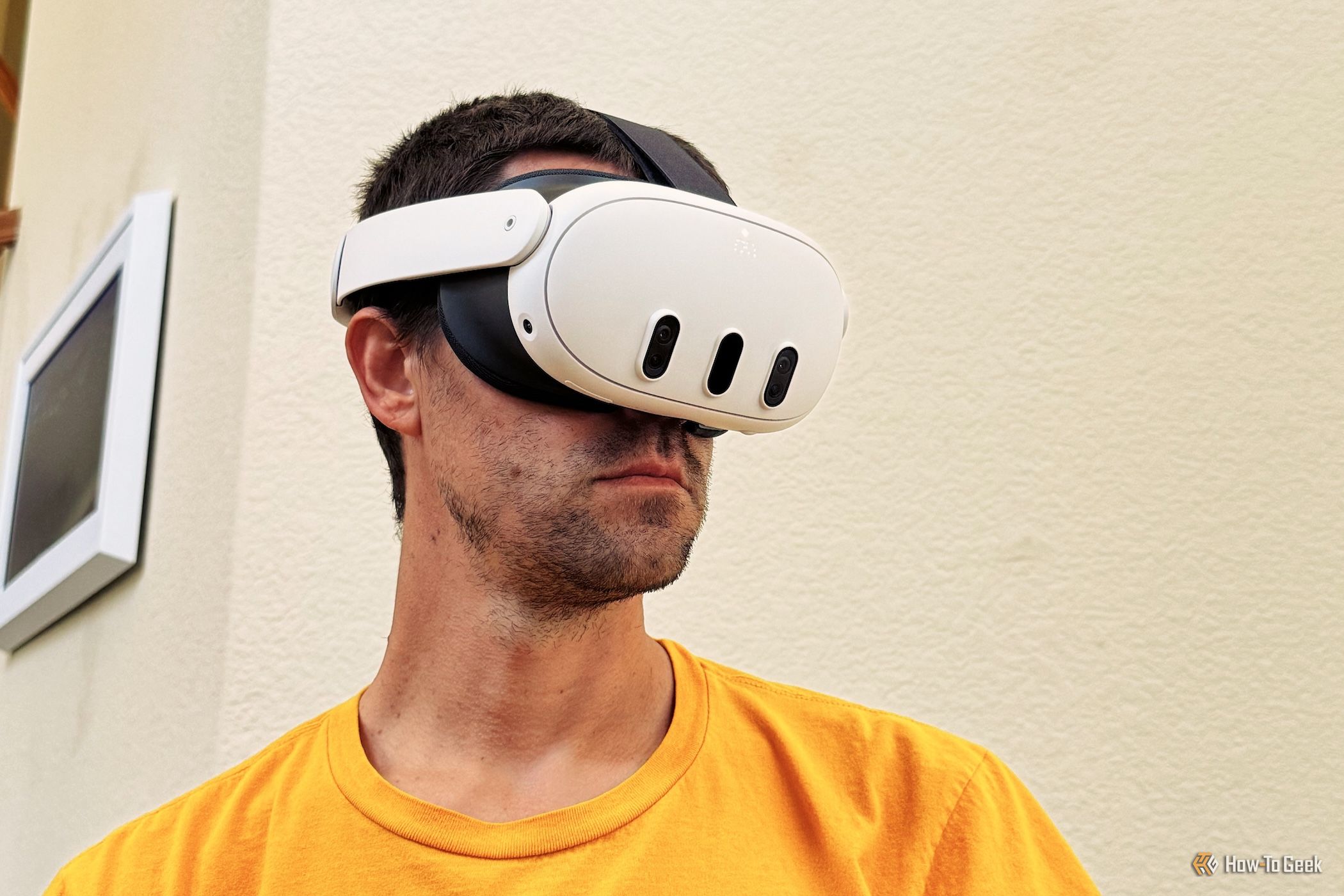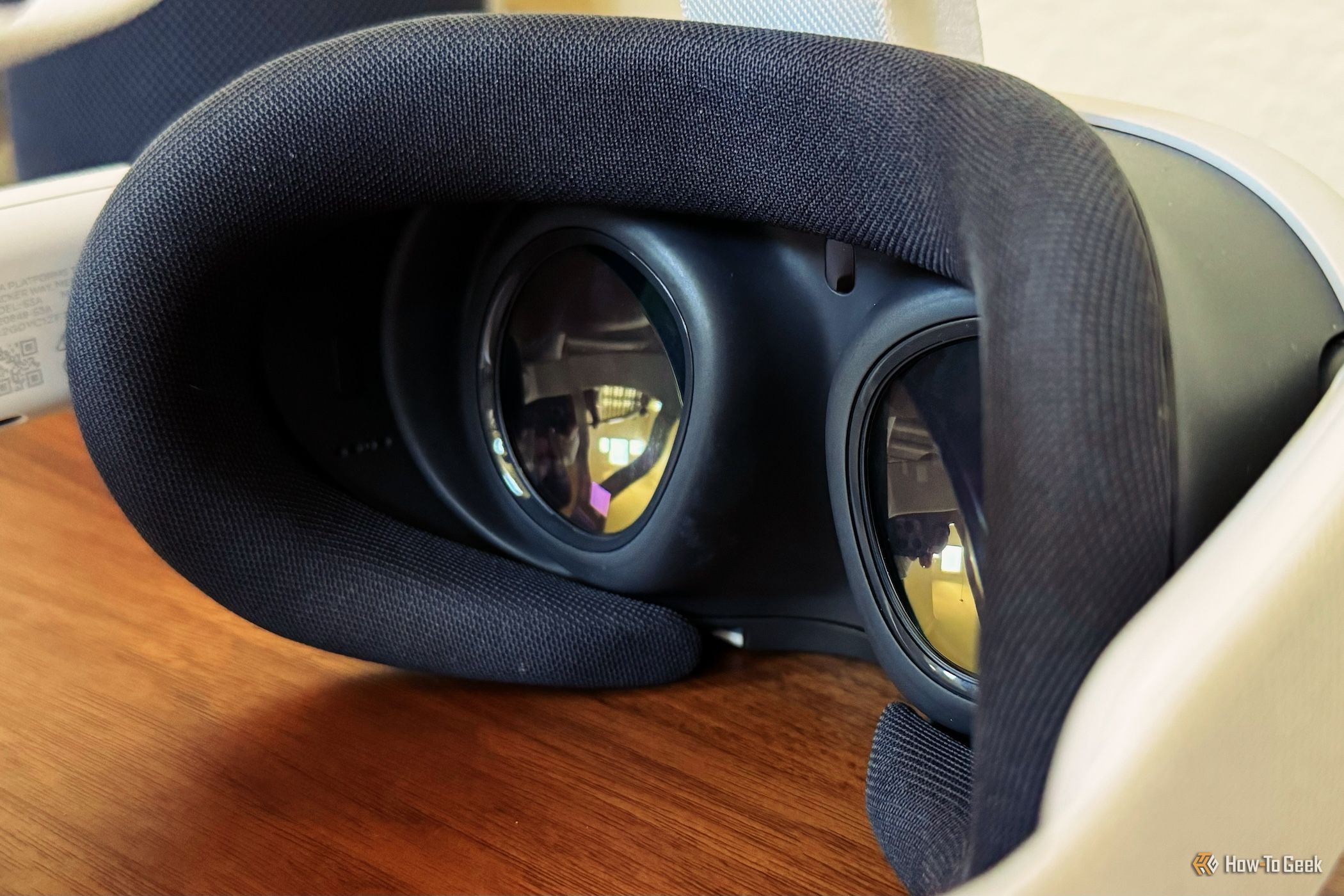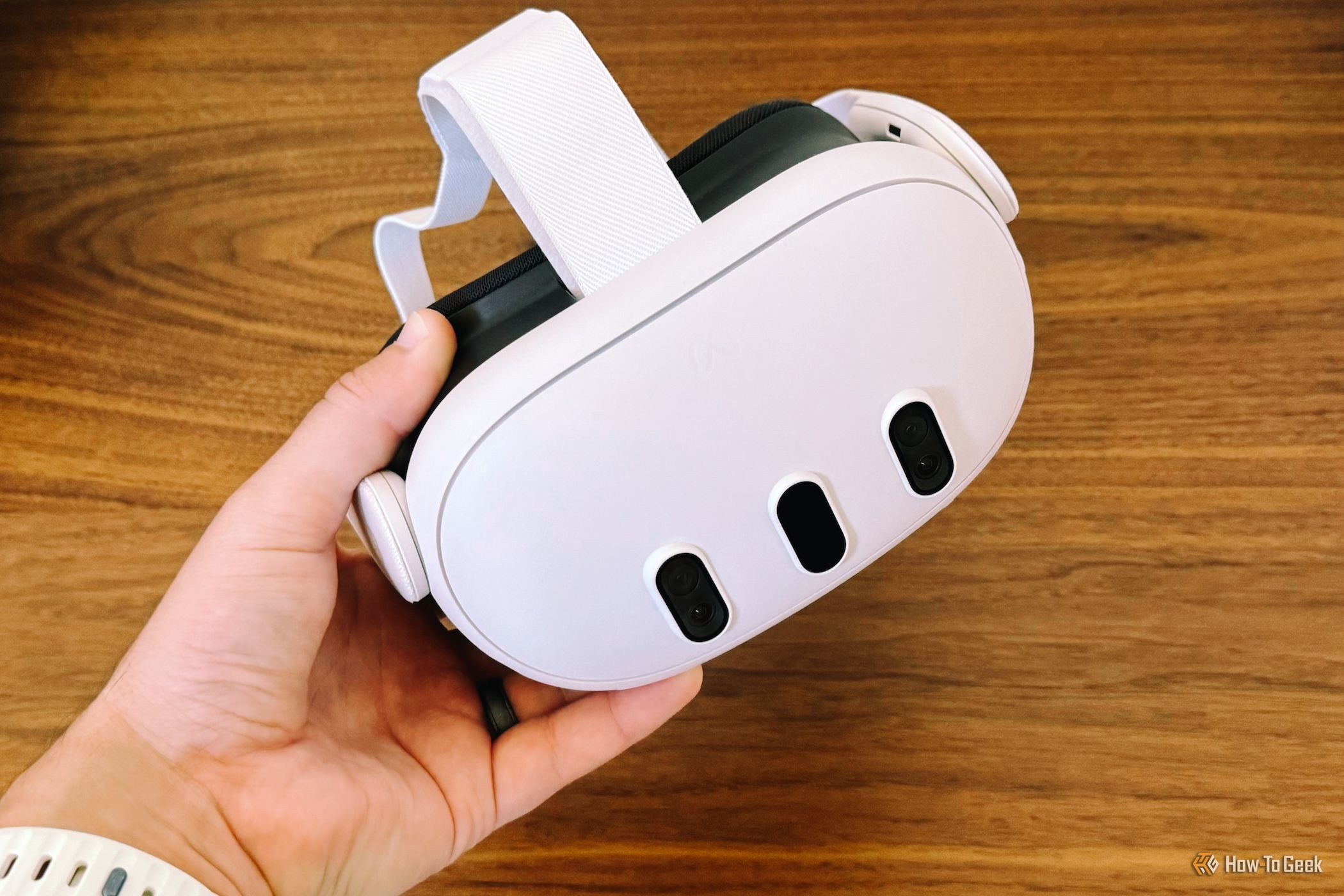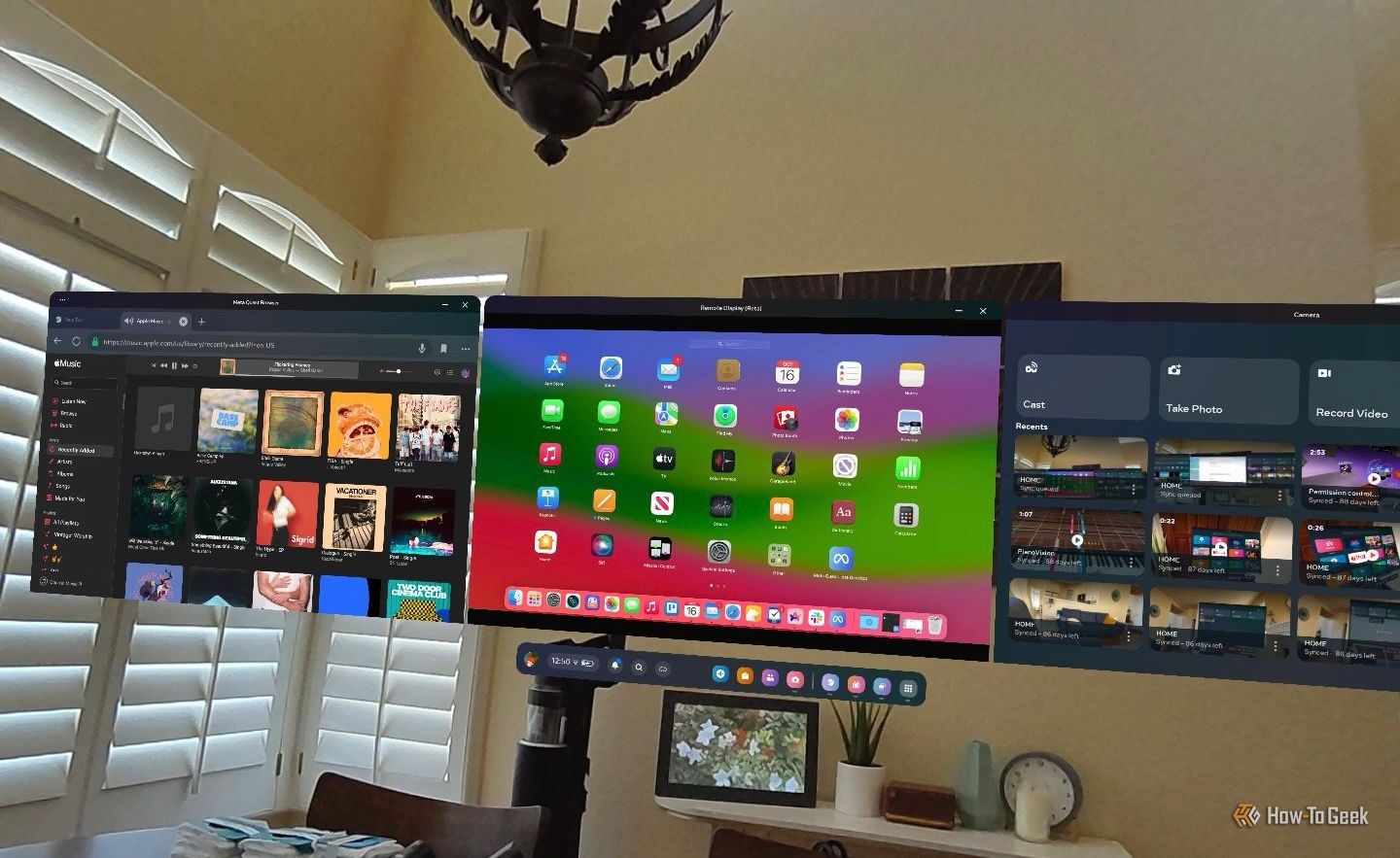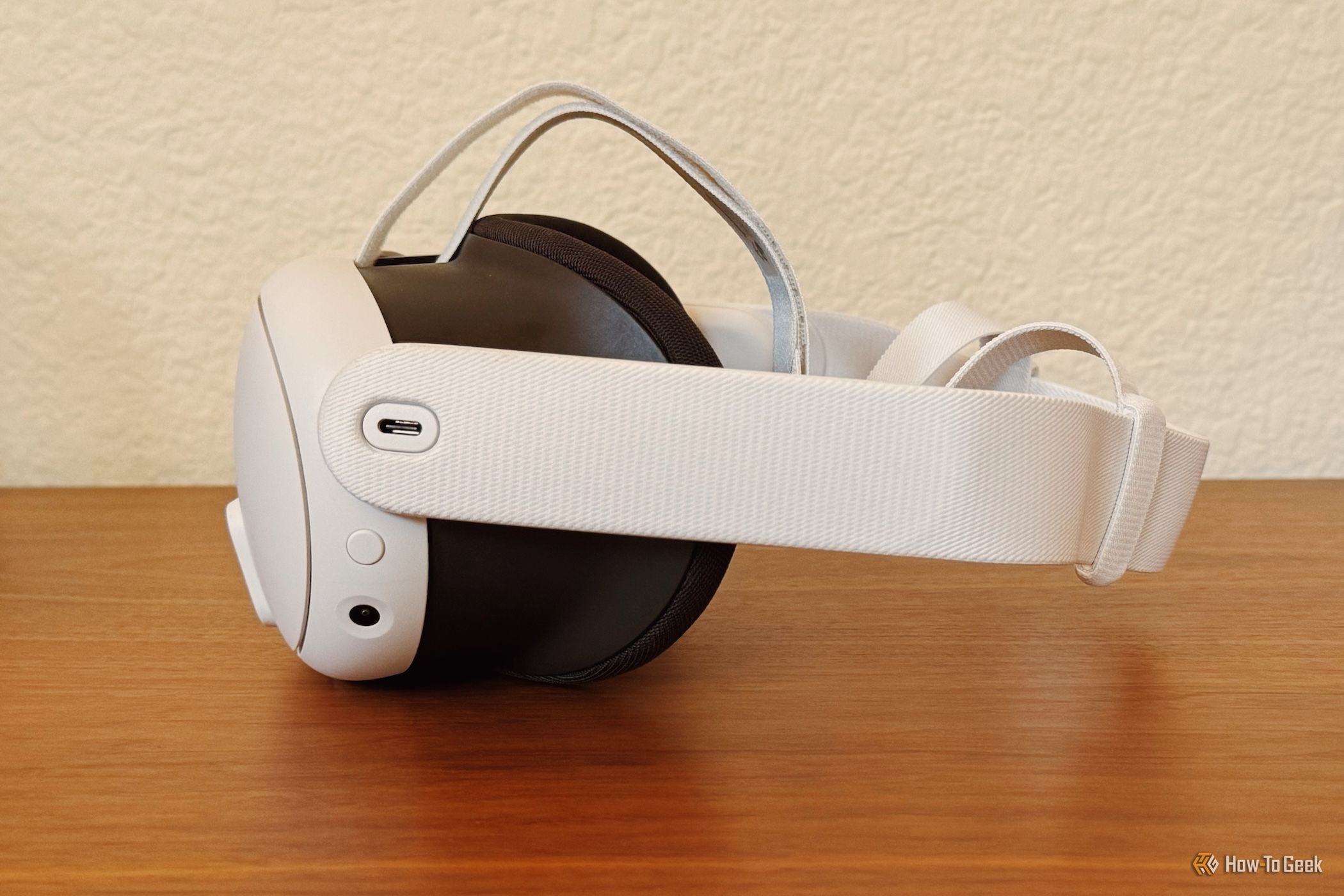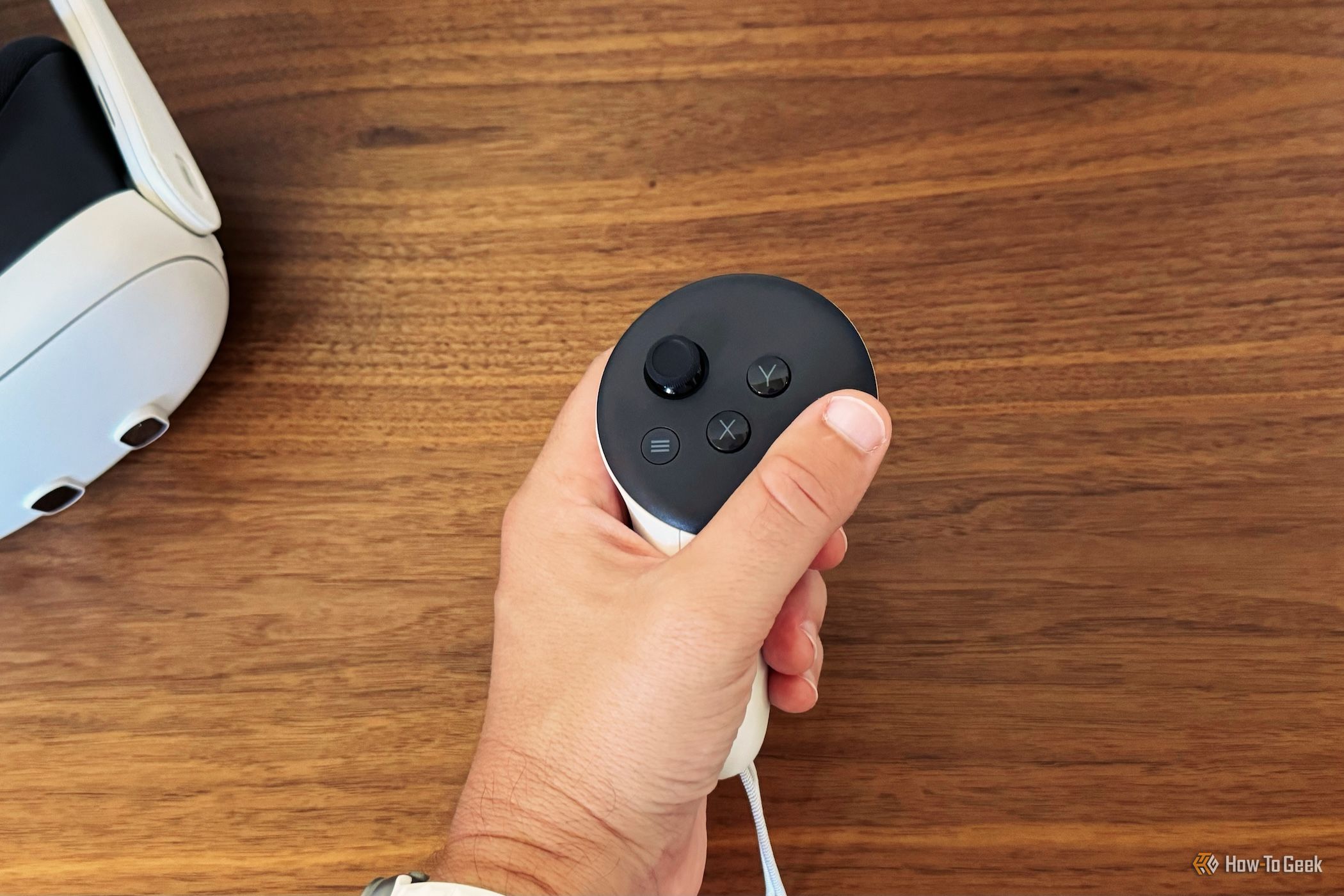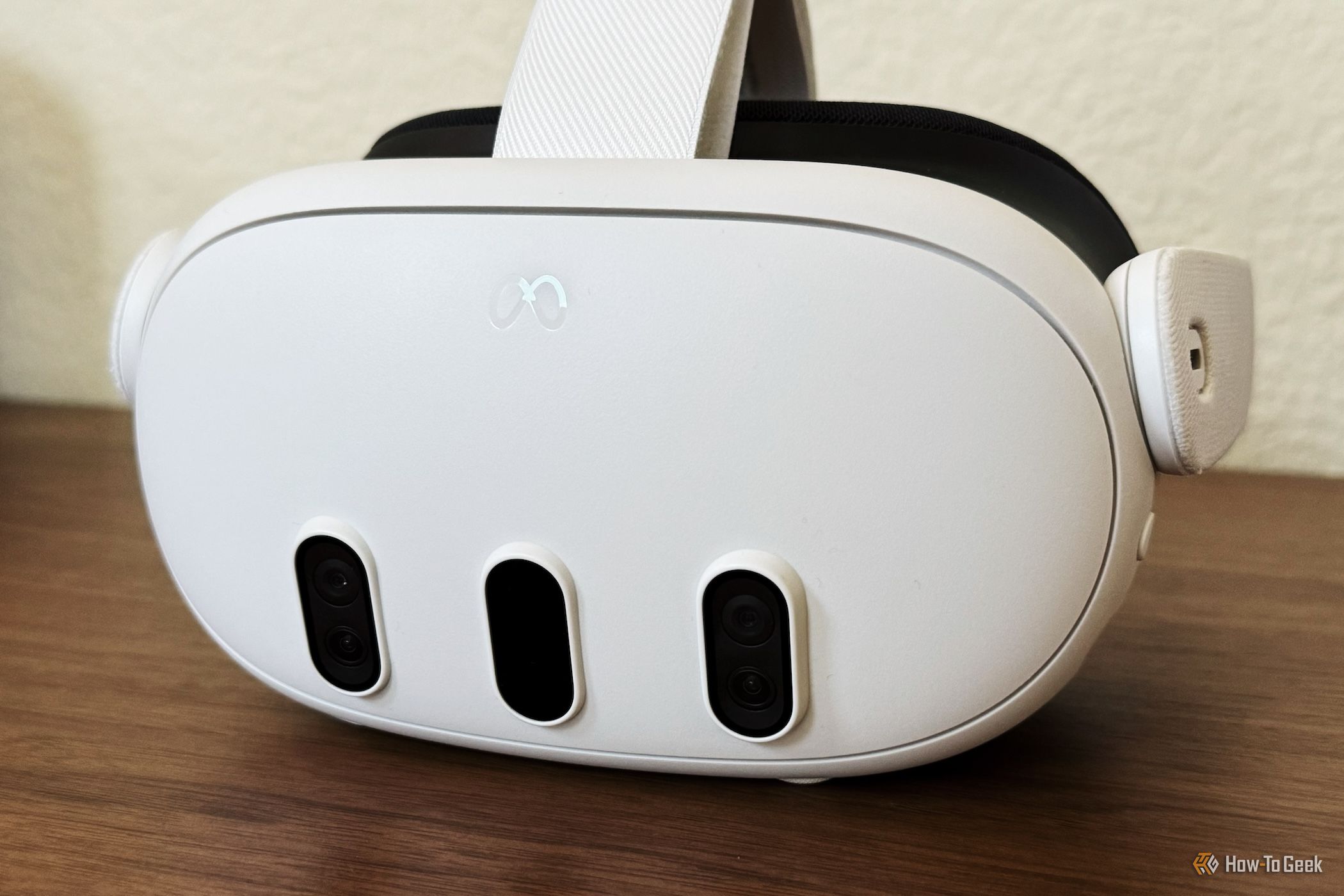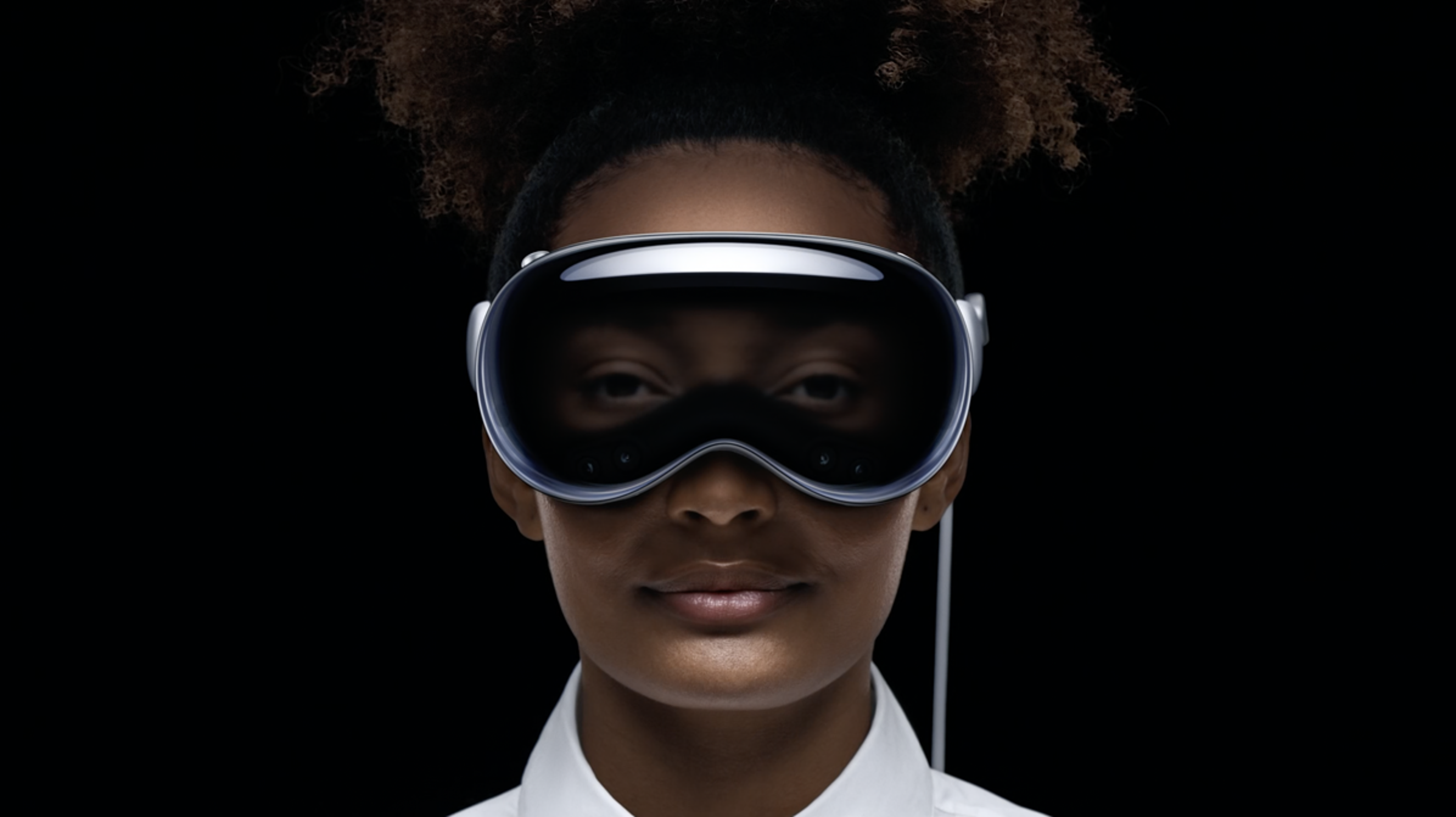
Unleashing the Potential: Meta Quest 3 Review

Meta Quest 3: A promising VR headset that seamlessly merges the real and virtual worlds, offering an immersive experience without the need for a battery pack Explore its design, productivity features, and compare it to Apple Vision Pro Find out if it's worth the purchase
Key Takeaways
The Meta Quest 3 is an improved VR headset with better graphics and sound, but its mixed-reality capabilities are lacking.
The Meta Quest 3 boasts a sleek design and comfortable fit, although the default head strap proved to be uncomfortable for my personal preference. In addition to its impressive mixed-reality demos, the Meta Quest 3 primarily excels in its extensive selection of VR apps and games.
The Meta Quest 3 is a top-notch VR headset, but falls short as a mixed-reality device. The upgrades from its predecessor, the Quest 2, greatly enhance virtual reality apps and experiences by improving graphics and sound. However, the Quest 3's incorporation of better cameras and depth sensors for passthrough video reveals that it was not originally designed with mixed reality as its foundation.
After trying a few mixed-reality demos, my appetite for those interactions grew. Unfortunately, many apps and experiences were VR-exclusive, leaving me wanting more. While the Quest 3 excels as a standalone VR headset and justifies its higher starting price of $500, it also serves as a tantalizing glimpse into the potential of future technology in this field.
The Meta Quest 3 surpasses the Meta Quest 2 in all aspects, now equipped with advanced full-color external cameras that enable incredible mixed reality experiences.
Improved resolution, with 2064 x 2208 pixels per eye
Available storage options of 128GB or 512GB
Connectivity via Wi-Fi 6E
Battery life of up to 2.2 hours on average
Integrated stereo speakers with 3D spatial audio
Weighing 515g
Variety of refresh rate options including 72Hz, 80Hz, 90Hz, and 120Hz (experimental only)
Powered by Snapdragon XR2 Gen 2 processor
Equipped with 8GB of RAM
Impressive field of view, offering 110 degrees horizontal and 96 degrees vertical
Passthrough feature supported by 2 RGB Color cameras and a depth projector
Advancements in the design of the headset and controllers, building upon the success of Quest 2
Enhanced graphics and sound quality
Color passthrough video is great
Cons Default head strap was uncomfortable
Increased base price makes it more of a commitment
$499 at Amazon $499.99 at Meta See at Best Buy
Design and Fit of Meta Quest 3
Tyler
The Quest 3 headset offers a more refined experience compared to the Quest 2, however, I personally found it uncomfortable to wear initially. The default headstrap was particularly bothersome. I decided to test Meta's Elite Strap, despite its hefty $70 price, and it significantly improved the comfort of wearing the Quest 3 for extended periods of time.
If you had issues with the Quest 2 headband, the one that accompanies the Quest 3 is unlikely to be any better. Furthermore, it felt slightly more difficult to adjust compared to its predecessor. Nevertheless, if you're looking to save some money, I would suggest considering a third-party headband as an alternative to the Elite Strap.
The Quest 3 headset is thinner in size, but still feels equally bulky when worn. While it may be more convenient to pack, the slight increase of 0.5 ounces in weight compared to the Quest 2 prevents me from forgetting that it is on my face.
When the Quest 3 is worn, it lacks a fashionable appearance. However, the new black ovals on the front serve the purpose of providing an improved video passthrough, allowing you to see your surroundings more clearly. It is important to note that having a clear view of your room is greatly enhanced.
If the Quest 2 headset symbolized the first part of "Wizard of Oz," then the Quest 3 embodies the second half. The contrast in experience is striking.
Firstly, with the Quest 3, I was able to effortlessly read the time displayed on my Apple Watch while wearing the headset. Additionally, I could seamlessly navigate through my phone by simply holding it up.
The color passthrough feature is indeed beneficial, although it has certain limitations. In some cases, there may be distortion around certain objects, and occasionally, when I held objects such as a plate, I observed some erratic behavior in the video.
Getting Used to the Mixed Reality of It All
Tyler Hayes
Initially, the sight of my rooms on the video feed seemed somewhat surreal. Immersing myself in a completely virtual world was more familiar. Gradually, however, I became accustomed to consistently observing different sections of my room and had a reduced inclination to engage with virtual reality applications. Throughout the entire duration, I craved the mixed reality experience.
The game demo called "First Encounters" is an exciting mixed reality experience. A spaceship dramatically crashes through the ceiling and lands in various locations within the room, often landing on objects like a couch or coffee table, which adds to the realism. Additionally, little Koosh balls break through the walls, adding to the thrill. The objective of the game is to zap as many of these objects as possible within a set time limit. While the game was impressive, it was relatively short-lived, and its appeal diminished after playing it a few times.
Another app, "Piano Vision," from the "You gotta see this" series, is a remarkable tool. It has the ability to overlay musical notes on the keys of my actual piano. The app guides me on when to play each note, allowing me to learn and play songs. The notes float towards me, reminiscent of the popular game "Guitar Hero," and I can then play them on my living room piano.
The app is undeniably futuristic, but it had some issues. I had to remap my room to deceive the headset into recognizing the piano against the wall within the designated area. It was a challenging process, but nonetheless enjoyable.
"Les Mills XR Bodycombat" ventures into the realm of mixed reality by creating a completely virtual space in front of you, while still allowing the rest of the room to be visible. This is similar to a recent update for “Smash Drums,” although the latter app provides a more immersive experience without causing feelings of isolation. By the way, "Smash Drums" offers immensely satisfying drumming, whether in virtual or mixed reality.
Once the MR experiences grew tiresome, I indulged in numerous casual VR games. Many of them were already accessible on the Quest 2 and now exhibit enhanced visuals on the new headset. Titles like "Fruit Ninja" and "Walkabout Mini Golf" boast smoother, more captivating animations on the Quest 3.
Over the years, "Epic Roller Coaster" has consistently pushed the limits of VR-induced nausea. Unsurprisingly, the improved graphics heighten the sensation of riding the rails, resulting in a more convincing and realistic experience.
Games are still VR's main draw and will probably be for at least the next few years. My kids only saw the Quest 3 as a game console and nothing more.
As a casual gamer, my true pleasure lies in the fitness experiences rather than intense gaming. Among the various apps available, "Supernatural" remains my preferred choice for workout sessions. The upgraded graphics on the Quest 3 further enhance the awe-inspiring natural environments.
Previously, with the Quest 2, I often felt the need to repeatedly readjust the headset due to jagged lines and less sharp visuals. However, with the improved clarity in "Supernatural" and other experiences, the strain has been relieved, allowing me to fully concentrate on the content.
Productivity in VR: Does Quest 3 Do Spatial Computing?
Tyler Hayes
Sitting at my dining room table, I had nothing but a keyboard and trackpad in front of me. In the Quest 3 headset, I typed a portion of this review within a window. To accomplish this, I quickly installed Meta's Remote Desktop app on my M2 MacBook Air.
Although this review does not directly discuss Apple's concept of spatial computing, I was able to simultaneously have three windows open. These included a Google Docs page on the remote desktop, a Meta Browser window logged into Apple Music, and the Camera app.
In the Quest 3, Apple Music is displayed in a browser window (left) alongside a remote desktop window (center), and the Camera app.
I wondered if I could perform my usual tasks on the Quest 3, considering the limited mixed reality functionality of the Quest 2. It was indeed possible, although it required a bit more effort.
Most of the apps in the Meta Quest 3 prevented it from functioning as a spatial computer because they prioritized full immersion. Opening the MLB app, for example, would occupy my entire field of view, making it impossible to check the scores. The same goes for the Meta Quest TV app, where clicking on a video would transport me to a 360- or 180-video that engulfed me completely.
Unfortunately, the limited functionality of the device only allowed me to open three windows side by side horizontally. I was unable to stack them vertically or perform any other advanced operations.
Using the Remote Desktop app required my Mac to remain turned on, but it offered no advantage over simply taking my laptop to the dining room table. I don't anticipate doing much writing on the Quest 3 in the near future. Although the resolution was acceptable for text, the inconvenience outweighed its benefits.
While using my Mac in the headset did offer some privacy, if that is your main goal, consider exploring projection glasses as an alternative.
No Battery Pack Needed
Tyler Hayes
Mark Zuckerberg and other participants at Meta Connect subtly criticized Apple at the event for its Vision Pro headset requiring a battery pack, unlike the Quest 3 which operates without being connected to one.
While using the Quest 3 independently was convenient, it didn't imply an endless duration of usage. Typically, I could use it for around two hours on a single charge. This often left me with limited time to enjoy it if one of my children had used the headset before me. To have enough time for an extensive "Supernatural" workout, I would need to charge it, even if only for a short period.
I often had a power cable or battery pack connected to the USB-C port on the headset while using it in a stationary position.
For individuals seeking extended use of the headset beyond a few hours, I highly recommend the Quest 3 Elite Strap with Battery. This accessory provides an extra two hours of usage time.
If I didn't reluctantly have to share the headset with both of my kids, the two-hour runtime would be sufficient for each session. I hardly ever desired to have it on my face for a longer period than that.
Meta Quest 3 Price and Availability
The Meta Quest 3 is available now and starts at $499.99 for 128GB of storage. The price jumps to $649.99 if you want 512GB of storage.
Meta Quest 3 vs. Apple Vision Pro
Tyler Hayes
While I cannot provide detailed comparisons between the Quest 3 and Apple Vision Pro, my experience with Meta's newest headset has granted me some philosophical understanding regarding the future direction of these devices.
Using the Quest 3 and remote desktop to access my laptop in a personalized digital environment was fascinating. However, for me to consider using the Vision Pro on a regular basis, it would need to offer significant improvements in terms of comfort and visibility.
Above all else, I recognize the significance of incorporating mixed reality into VR headsets. There will likely always be compelling reasons to completely immerse oneself in a virtual world, so that aspect will continue to exist. However, developers will need to come up with innovative ways to create applications that seamlessly integrate with people's real-life surroundings.
I have yet to try out Apple's eye-tracking feature for navigating its interface, but it is highly likely that it will provide a superior experience compared to the rudimentary hand-tracking on the Quest 3. Scroll gestures such as pinching and dragging, as well as attempting to move a cursor and then pinch to click on a target, proved to be challenging. While the Quest 3 controllers were effective when used, the constant switching back and forth between controller and hand-tracking was somewhat frustrating.
Should You Buy the Meta Quest 3?
Tyler Hayes
In a broader context, tech products can be divided into three categories: products designed specifically for tech enthusiasts, products that captivate and generate enthusiasm among users, and universally appealing devices that quickly gain popularity among mainstream consumers.
Looking back, the Quest 2 was designed specifically for VR enthusiasts, offering a cutting-edge experience. As the Meta Quest 3 emerges, it has the potential to broaden the company's audience and introduce more individuals to the realm of virtual and mixed realities.
If enhanced graphics and additional immersive encounters ignite your enthusiasm for the Quest 3, it would be wise to make your purchase sooner rather than later. The Quest 3 is significantly more refined and comprehensive compared to its $300 predecessor, the Quest 2.
If the mixed reality aspects of the Quest 3 are what tempt you the most, it might be wise to hold off on making a purchasing decision. Waiting until there are more compelling experiences available or until the device goes on sale for the first time could be a good idea. Allowing some time for the mixed reality features to develop and improve might be a smart choice.
MetaMeta Quest 3
The Meta Quest 3 surpasses the Meta Quest 2 in all aspects and introduces groundbreaking mixed reality capabilities through its advanced full-color external cameras.
With a resolution of 2064 x 2208 pixels per eye, storage options of either 128GB or 512GB, and Wi-Fi 6 connectivity, this device offers enhanced performance and flexibility. Its battery life averages up to 2.2 hours, and it features integrated stereo speakers with immersive 3D spatial audio.
Weighing 515g, the Meta Quest 3 provides a comfortable and lightweight experience. The device offers a refresh rate of 72Hz, 80Hz, 90Hz, and experimental 120Hz. Powered by the Snapdragon XR2 Gen 2 processor and equipped with 8GB of RAM, it delivers smooth and efficient operation.
With a field of view spanning 110 degrees horizontally and 96 degrees vertically, the Meta Quest 3 provides an expansive viewing experience. It also features passthrough capabilities, utilizing two RGB color cameras and a depth projector.
Available for purchase at $499 on Amazon and $499.99 on Meta's official website, you can also find it at Best Buy.
